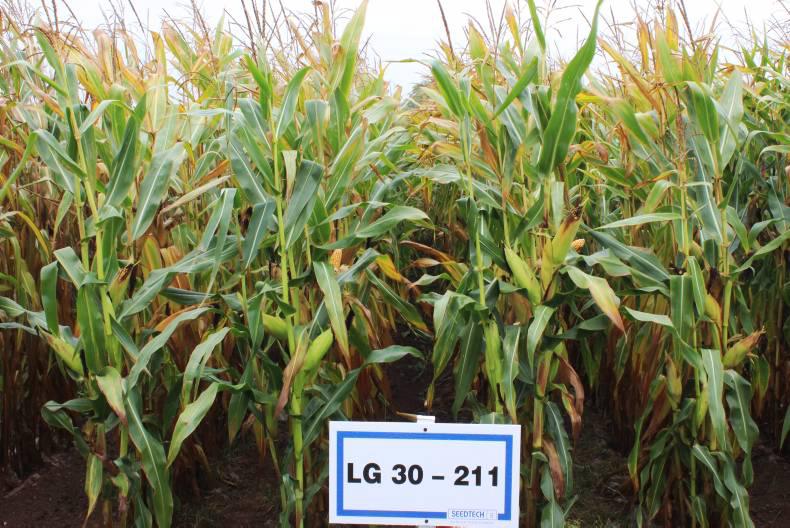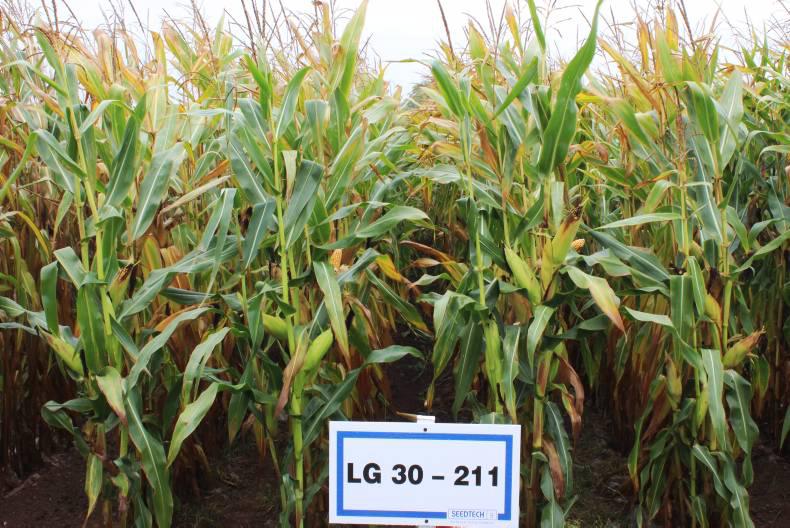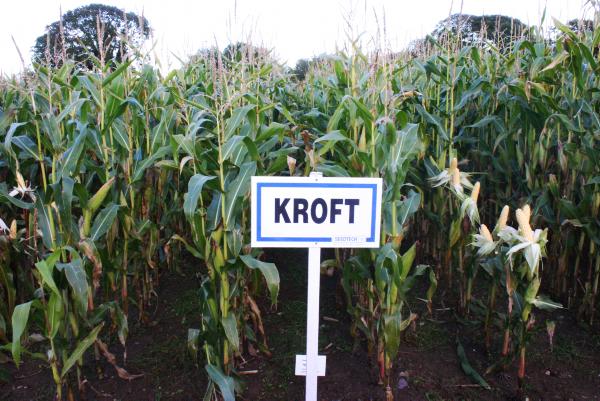Cereal crops had a good year in the main but it remains to be seen how maize, the last cereal to be harvested, will perform.
While the year has been kind to the small grain cereals, except for parts of the south, west and northwest, we must wait to see what lies ahead for the maize crop following the cold spring.
With this in mind, I recently visited the Department’s maize recommended list trial with Cara MacAodháin in Backweston. As always, these are good plots and look to have good potential despite the cold spring. Some of the earlier varieties were already showing signs of maturity a few weeks ago, as the leaves were losing colour.
This coming year, there will only be one recommended list, which will be for planting under plastic. The five currently recommended varieties include Award, Grosso (which came on last year), Justina (a long-serving servant), P7905 (also came on last year) and Tekni. For many years no new varieties appeared but this began to change last year and it looks like new useful candidates will continue.
There are four new varieties up for consideration following this harvest so I had a particular interest is looking at these.
Ambition
This is currently recommended for planting in the open and rated with high yield, high dry matter content and high starch.
So it is very useful in the open – but how will it perform under plastic?
Ambition has already done two years in plastic-covered trials and its dry matter and starch characteristics have shone through. However, in the past two seasons its yield has only been an average of 94% of the controls. It is very early maturing under plastic, has an average starch content of 118 but many growers still prefer bulk over starch even though starch is where the main value is for animal performance.
It remains to be seen if this will be recommended or not. It would suit a situation where a winter crop is to be sown following maize harvest.
Galbi
This might be described as the opposite to Ambition. In its two years in recommended list trials it has done an average of 112 on yield over controls but it is only 88 on starch and dry matter. This is a big bulky variety which is easily visible when looking at the variety.
However, it is a later-maturing variety as indicated by its low relative dry matter content and therefore might only be considered for early sowing on better sites. DAFM results show low relative starch content per kilo of dry matter which is likely due to its big foliage yield.
Schobbi
Schobbi appears to come somewhere between the two aforementioned candidates. It has lower total yield than Galbi but much better quality. Results in the past two years averaged 98 for dry matter yield, 106 for relative dry matter and 108 for relative starch content.
This is also quite an early maturer, which can be a specific benefit to those wanting to establish a winter crop in the autumn following harvest.
LG 30.211
The fourth variety up for consideration is a numbered one from Limagrain – LG 30.211. This one has average maturity and it is not too tall while still delivering high total yield potential.
In its two years in trials to date, it has been very consistent in its performance ratings. Its average ratings for the past two years have been 101 for relative yield, 99 for relative dry matter content and 107 for relative starch content.
Pipeline
There are a number of other good-looking varieties in the trial also. Some are in their first year, while others have one year’s results. It seems like Pipeline is set to deliver for a few more years.
Corfinio is one of those being examined. It has very high yield potential (110), based on 2014, with very good dry matter and starch values. SY Feeditop also looked very promising last year with high yield, dry matter and starch levels.
A Pioneer variety called P8200 has shown very high yield but it has lower than average dry matter and quite low relative starch content. LG30.212 also looks very promising with high yield and dry matter combined with very high starch.
These are all interesting prospects but the measure of any variety is how it performs over time and in more challenging seasons. So it will be another two years before any reasonable estimate of performance consistency will be known.
However, all varieties coming for recommended list evaluation have already been evaluated by Irish companies, so we look forward with optimism to seeing a continued flow of superior new varieties in the years ahead.
It would seem that there are quite a number of good new forage maize varieties making their way into recommended list evaluation.The first of these came onto the recommended list last year and it looks like a number of others will make real contenders for 2016 planting.
Cereal crops had a good year in the main but it remains to be seen how maize, the last cereal to be harvested, will perform.
While the year has been kind to the small grain cereals, except for parts of the south, west and northwest, we must wait to see what lies ahead for the maize crop following the cold spring.
With this in mind, I recently visited the Department’s maize recommended list trial with Cara MacAodháin in Backweston. As always, these are good plots and look to have good potential despite the cold spring. Some of the earlier varieties were already showing signs of maturity a few weeks ago, as the leaves were losing colour.
This coming year, there will only be one recommended list, which will be for planting under plastic. The five currently recommended varieties include Award, Grosso (which came on last year), Justina (a long-serving servant), P7905 (also came on last year) and Tekni. For many years no new varieties appeared but this began to change last year and it looks like new useful candidates will continue.
There are four new varieties up for consideration following this harvest so I had a particular interest is looking at these.
Ambition
This is currently recommended for planting in the open and rated with high yield, high dry matter content and high starch.
So it is very useful in the open – but how will it perform under plastic?
Ambition has already done two years in plastic-covered trials and its dry matter and starch characteristics have shone through. However, in the past two seasons its yield has only been an average of 94% of the controls. It is very early maturing under plastic, has an average starch content of 118 but many growers still prefer bulk over starch even though starch is where the main value is for animal performance.
It remains to be seen if this will be recommended or not. It would suit a situation where a winter crop is to be sown following maize harvest.
Galbi
This might be described as the opposite to Ambition. In its two years in recommended list trials it has done an average of 112 on yield over controls but it is only 88 on starch and dry matter. This is a big bulky variety which is easily visible when looking at the variety.
However, it is a later-maturing variety as indicated by its low relative dry matter content and therefore might only be considered for early sowing on better sites. DAFM results show low relative starch content per kilo of dry matter which is likely due to its big foliage yield.
Schobbi
Schobbi appears to come somewhere between the two aforementioned candidates. It has lower total yield than Galbi but much better quality. Results in the past two years averaged 98 for dry matter yield, 106 for relative dry matter and 108 for relative starch content.
This is also quite an early maturer, which can be a specific benefit to those wanting to establish a winter crop in the autumn following harvest.
LG 30.211
The fourth variety up for consideration is a numbered one from Limagrain – LG 30.211. This one has average maturity and it is not too tall while still delivering high total yield potential.
In its two years in trials to date, it has been very consistent in its performance ratings. Its average ratings for the past two years have been 101 for relative yield, 99 for relative dry matter content and 107 for relative starch content.
Pipeline
There are a number of other good-looking varieties in the trial also. Some are in their first year, while others have one year’s results. It seems like Pipeline is set to deliver for a few more years.
Corfinio is one of those being examined. It has very high yield potential (110), based on 2014, with very good dry matter and starch values. SY Feeditop also looked very promising last year with high yield, dry matter and starch levels.
A Pioneer variety called P8200 has shown very high yield but it has lower than average dry matter and quite low relative starch content. LG30.212 also looks very promising with high yield and dry matter combined with very high starch.
These are all interesting prospects but the measure of any variety is how it performs over time and in more challenging seasons. So it will be another two years before any reasonable estimate of performance consistency will be known.
However, all varieties coming for recommended list evaluation have already been evaluated by Irish companies, so we look forward with optimism to seeing a continued flow of superior new varieties in the years ahead.
It would seem that there are quite a number of good new forage maize varieties making their way into recommended list evaluation.The first of these came onto the recommended list last year and it looks like a number of others will make real contenders for 2016 planting. 









SHARING OPTIONS